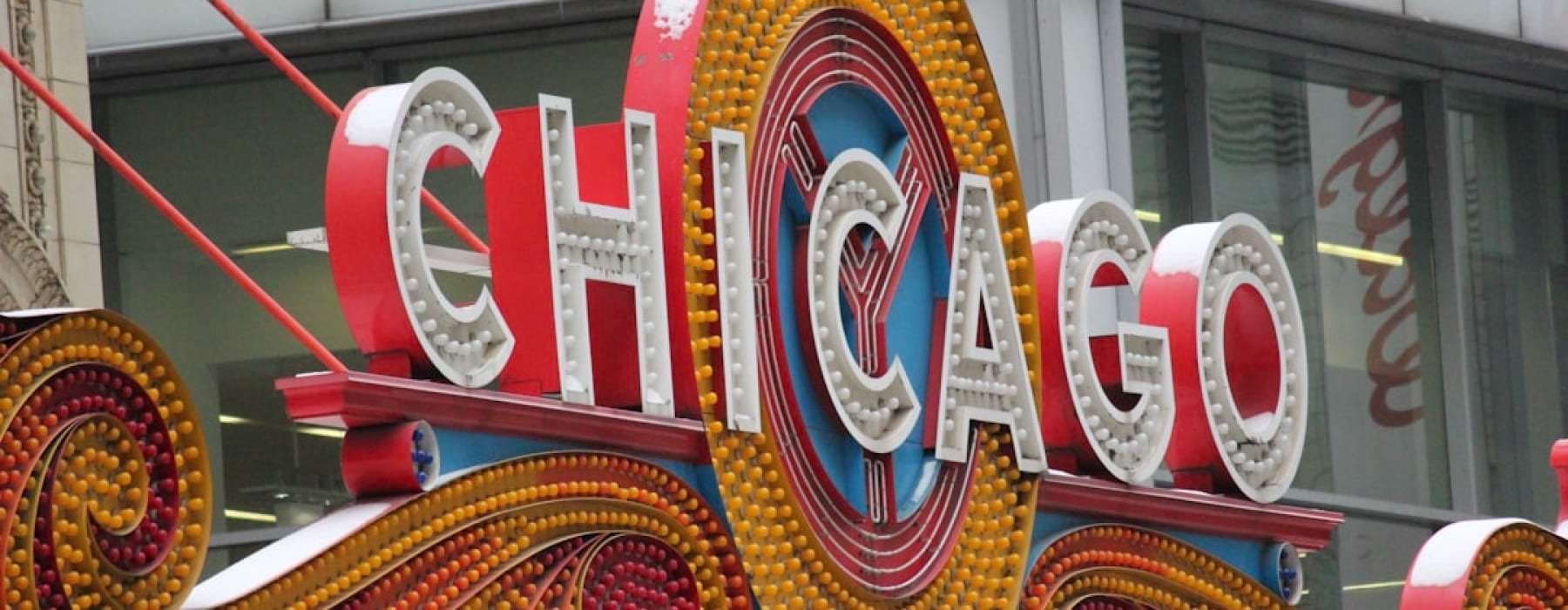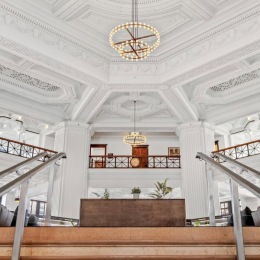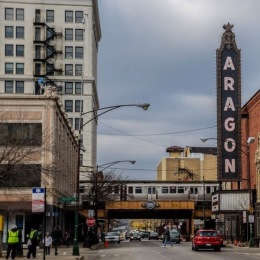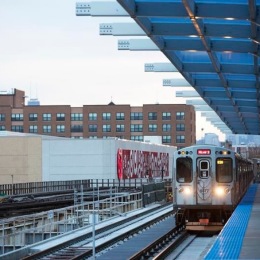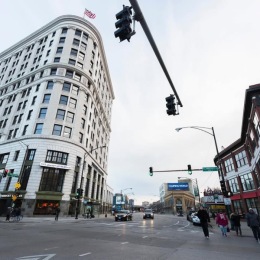Why Heritage Matters in the Windy City
Chicago heritage represents one of America's most diverse and dynamic cultural stories, shaped by indigenous peoples, waves of immigration, and remarkable resilience through disasters and change.
Key Elements of Chicago Heritage:
- Indigenous Foundation: Named from the Miami-Illinois word "shikaakwa" (wild leeks), with Potawatomi, Ojibwe, and Odawa peoples as original inhabitants
- Multicultural Settlement: Jean Baptiste Point DuSable established the first permanent settlement in 1779
- Transportation Hub: Illinois-Michigan Canal and railroad networks transformed Chicago into a major metropolitan center
- Immigration Waves: Polish, Mexican, Greek, Chinese, and African American communities created distinct neighborhoods
- Architectural Innovation: Rebuilding after the Great Chicago Fire of 1871 led to skyscraper development
- Cultural Preservation: Over 40 heritage museums and 384 individual landmarks protect the city's diverse legacy
Chicago has drawn diverse peoples to live and work on the shores of Lake Michigan. The city's heritage lives in active neighborhoods where Polish festivals draw 35,000 visitors annually, Mexican Day of the Dead celebrations fill Pilsen's streets, and museums use modern technology to bring stories to life.
From the four stars on Chicago's flag representing major historical events to preserved historic rail cars, the city's past connects directly to modern life.

From Chicagoua to Chicago: Indigenous Roots & Early Settlement
Long before Chicago became the nation's second-largest city, the land at the mouth of the Chicago River was home to indigenous peoples who understood its strategic importance. The Miami-Illinois word "shikaakwa" referred to the wild leeks that grew abundantly in the marshy areas around the river.
The Potawatomi, Ojibwe, and Odawa peoples formed the Three Fires Confederacy, using the area as a crucial portage point between the Great Lakes and Mississippi River systems. These communities established trading networks that connected the Atlantic coast to the western territories.
What Does the Name Mean?
The etymology of Chicago traces back to the indigenous understanding of the landscape. "Shikaakwa" described the wild leeks and the entire ecosystem of swamps and marshes that characterized the region. French explorers Jacques Marquette and Louis Jolliet encountered this word during their 1673 expedition, marking it on their maps as "Chicagoua."
First Village & Trading Post
Jean Baptiste Point DuSable, a Haitian of African and French descent, established the first permanent settlement in 1779. His trading post became a multicultural outpost where French traders, indigenous peoples, and American settlers conducted business. This early multicultural foundation would prove prophetic, as Chicago would continue to attract diverse populations throughout its history.
Fort Dearborn, established in 1803, marked the beginning of formal American presence in the area. The fort's destruction during the War of 1812 is commemorated by the first star on Chicago's flag.
Rails, Rivers & Reconstruction: Building the Modern Metropolis
Chicago's change from frontier settlement to major metropolis happened with remarkable speed, driven by strategic investments in transportation infrastructure and the city's ability to rebuild after catastrophic setbacks.
The Illinois-Michigan Canal, completed in 1848, connected the Great Lakes to the Mississippi River system through Chicago. This 96-mile waterway made Chicago the crucial link between eastern markets and western territories.
Railroad development accelerated Chicago's growth even more dramatically. By 1856, Chicago was the hub of ten trunk lines with 3,000 miles of track radiating outward. The stockyards, established in 1865, made Chicago the "Hog Butcher for the World."
Rebuilding After Flames
The Great Chicago Fire of 1871 destroyed much of the city but also created opportunities for architectural innovation. The fire cleared 2,100 acres and left 100,000 people homeless, but Chicago's response demonstrated remarkable resilience.
New fire codes required fireproof construction materials, leading to experimentation with steel frame construction. Architects like Louis Sullivan and Daniel Burnham pioneered the skyscraper form.
The World's Columbian Exposition of 1893 showcased Chicago's recovery to the world. The fair drew 27.5 million visitors and demonstrated American architectural capabilities.
Mosaic of Migration: Communities & Cultures
Chicago heritage is fundamentally shaped by successive waves of immigration that created distinct neighborhoods, each preserving unique cultural traditions. The Polish community represents one of Chicago's most significant immigrant populations, with the city hosting one of the largest Polish communities in the world outside of Poland.
Mexican immigration accelerated during the Mexican Revolution, with Pilsen becoming the heart of Latino culture. The National Museum of Mexican Art houses more than 10,000 works. Greek immigrants established Greektown, while Chinese immigrants created Chinatown on the South Side.
Festivals & Flavors Celebrating Heritage
Chicago's cultural calendar reflects its diverse heritage through festivals celebrating specific communities. The Taste of Polonia festival is the largest Polish festival in the country, visited by over 35,000 people annually. The National Museum of Mexican Art's Day of the Dead celebrations transform Pilsen into a vibrant celebration of Mexican traditions.
Food traditions serve as living expressions of chicago heritage, from authentic Polish restaurants along Milwaukee Avenue to dim sum in Chinatown and Greek tavernas in Greektown.
Preserving the Past: Museums & Landmarks
Chicago's commitment to preserving its diverse heritage combines professional expertise with community-driven initiatives. The DuSable Black History Museum houses more than 15,000 objects documenting African American experiences, using augmented reality technology for interactive experiences.
The National Museum of Mexican Art houses more than 10,000 works, while the National Hellenic Museum preserves Greek heritage through more than 17,000 artifacts spanning thousands of years.
How Landmarks Stay Alive
Chicago's Historic Preservation Division protects 384 individual landmarks and approximately 10,000 buildings within historic districts. The Class L Property Tax Incentive encourages rehabilitation of landmark buildings by providing property tax relief for qualified projects.
Community surveys ensure that landmark designation reflects neighborhood priorities. The Black Chicago Heritage Initiative exemplifies this community-driven approach, working to identify and preserve cultural heritage through grassroots participation.
Engaging with History Today: Tours & Historic Living
Chicago heritage comes alive through interactive experiences. The Chicago Architecture Center leads tours exploring the city's architectural heritage, while river cruises provide unique perspectives on Chicago's skyline evolution.
The CTA Heritage Fleet Program preserves Chicago's transportation history through vintage vehicles that remain operational for special events. Car 1, built in 1892, carried passengers to the World's Columbian Exposition in 1893.
Sleep in a Story
Chicago Historic Building Apartments offer residents the opportunity to live within the city's architectural heritage. The Teller House Apartments by Flats® exemplifies this approach, converting a historic bank building in Uptown into luxury apartments that maintain architectural integrity.
Chicago Historic Apartments for Rent span multiple neighborhoods, from converted warehouses in the West Loop to restored mansions on the Gold Coast.
Frequently Asked Questions about Chicago Heritage
Why are there four stars on the Chicago flag?
The four stars represent major historical events: the Fort Dearborn Fire of 1812, the Great Chicago Fire of 1871, the World's Columbian Exposition of 1893, and the Century of Progress Exposition of 1933.
Which immigrant group is the largest in Chicago today?
Chicago's Polish population is one of the largest in the world outside of Poland, while Latino communities, particularly Mexican Americans, also represent a major portion of the city's population.
How can residents nominate a building for landmark status?
Residents can contact the Historic Preservation Division at 312.744.4190 or landmarks@cityofchicago.org. The Division works with property owners and community members throughout the designation process.
Conclusion
Chicago heritage represents far more than preserved buildings and museum collections - it embodies the living traditions and adaptive resilience that define the city's character. From indigenous peoples who first recognized the strategic importance of the Chicago River to contemporary communities that continue to shape neighborhood identities, the city's heritage reflects America's story of diversity and opportunity.
For those seeking to engage with chicago heritage daily, opportunities abound throughout the city's 77 community areas. Whether exploring cultural experiences, participating in neighborhood festivals, or choosing to live in historic buildings, residents can actively participate in the city's ongoing cultural evolution.
The Teller House Apartments by Flats® exemplifies this connection between heritage and modern living, changing a historic bank building into contemporary homes while preserving architectural character. Located in Uptown, residents enjoy proximity to cultural attractions and diverse dining options that reflect the neighborhood's multicultural heritage.
As Chicago continues to evolve, its commitment to preserving and celebrating diverse cultural heritage ensures that the city's future will be enriched by the wisdom and traditions of all communities that have called it home.
